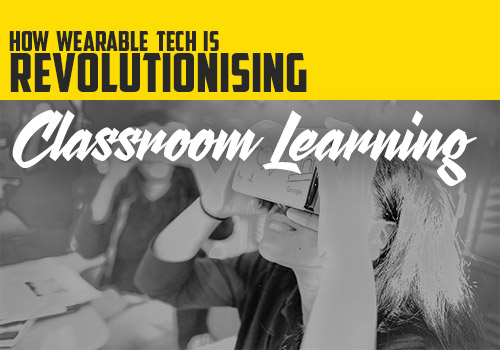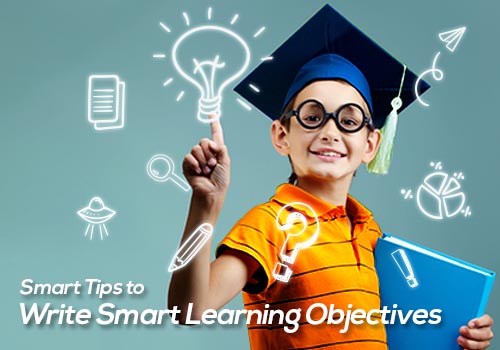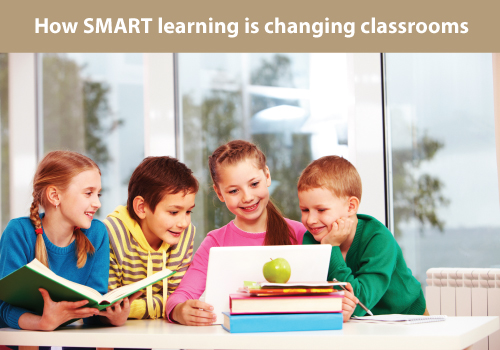Technology has by far spread its wings into every sphere of human life. Simplifying the lives of both students and teachers, technology-powered gadgets have already made their strong presence felt in the arena of education. Crafted to help educators and learners with their daily classroom routines, the present generation can now bank on wearable technology. Drifting away from the thought that wearables can distract the attention of the learners, these gadgets have steadily become modern powerful learning instruments.
If you are curious to know the ways in which these tech-powered wearables can enhance learning by imparting quality education to students, here they come.
- Enhanced Student Engagement
Modern wearable technologies surely demand a special mention as exciting tools to help students engage better with their lessons. Google Glasses are the promising educational tools that can lend a helping hand to students to get first-hand information about any topic of their choice. Educators can use these innovative wearables to come up with teaching schedules that can be shared amongst students and the teaching staff.
Through these gadgets, students will be informed about their timelines for assignment submissions and the exam schedules so as to ward off any instances of miscommunication. These wearables enable you to learn at your own pace.
You as a student wearing Google Glasses will also be able to make the most of distance learning. Allowing you to share lessons loaded with practical illustrations, you can enjoy holistic learning through experiments and appealing subject content that is presented by these gadgets.
- The Hands-Free Convenience
Wearables in education are star attractions on the strength of being hands-free. When you wear a gadget, you are freeing both your hands. A pair of free hands can help you better interact with the real world, alongside permitting you to enjoy a convenient access to other devices that are in your vicinity. This positive goes a long way in increasing the level of communication between you as a student and the tutor.
Wearables which come with environment sensing are the stepping stones for students to develop healthy learning habits. Google Glasses, through their hands-free feature, can come in as excellent learning tools permitting you to jot down notes without missing out important subject matter during class lectures.
- A Coordination Between Teachers and Students
For a classroom to become a haven for learning and knowledge, it is important that the teachers and students work in tandem with each other. There has to be a high level of coordination between both the parties so as to develop strong scholastic relationships.
With wearables in place, teachers can conduct real-time classes without assembling all the students under one roof. An on-the-go learning session is a matter of convenience that is bestowed by these wearables. Wearables which come in different forms stay with you for the entire working day, imparting knowledge about any topic that interests you.
- Communication Made Easy
With the beginning of every new academic year, students and teachers are introduced to newer versions of wearables. Updated wearables promise enhanced functionalities like messaging features, GPS and chat options are available on a Smart Watch. These wearables simplify the communication between teachers and learners alongside helping the wearer to perform calculations through its touch-screen mechanism.
You can send any sort of a query to your teacher via the smart watch, which can be answered by your faculty even remotely. Reminders that can be fed into these wearables will thus make the lives of students simple and enjoyable at the same time.
You can engage in smart communication with your peers in addition to enjoying a better access to study material you are looking for. You can effortlessly take notes of all the important topics and collate them into ready-reference study material.
- Video Recorders Are Modern Learning Tools
The markets are abuzz with wearable learning tech that come in the form of compact video recorders fitted with sophisticated cameras. GoPro is one such alternative that can be employed by teachers to record class lectures.
These recorded lectures which brim with in-class experiences of different students will come handy to students who have either missed a class or were absent for an entire day owing to ill-health or any personal engagement. It is through this Virtual Reality (VR) enabled GoPro wearable video recorder that you can master subjects like mass communication, journalism and classes aimed at television production.
- Learn History and Languages the Smart Way
Now is the era of Virtual Reality that has attracted the attention of both learners and tutors. A host of VR headsets have already penetrated into the educational sphere permitting students specializing in languages, civics and history.
Through VR headsets, you will be transported into another territory that is linked to your subject of interest. You begin to enjoy the feel of former empires coupled with loads of information concerning foreign locales and their cultures. You can go to these places without having to step out of your classroom and experience the lifelike learnings that cannot be assimilated through useless images, pictures, slideshows or static posters.
These real-time field trips are the best ways to learning since they bring in an element of realism to what all the students wish to learn. It is through such enlivening experiences that you as a student can unleash a new world of learning. You will then be able to experience the real thrill behind education which now comes with captivating and fun-filled elements.
- Enhanced Parental Participation in the Learning Process
Not only are Google Glasses useful for learning in classrooms, they can also become potent tools of effective communication between teachers and parents. Teachers, through a Google Glass, can inform the progress of students to parents in the form of report cards. When the report card reaches the parents, they will be encouraged to partake in the learning process of their wards so as to help them in their pursuit of knowledge and better grades. Through Google Glass, teachers can ensure an effortless and direct path of communication with the parents of students. This way, a healthy in-house and classroom learning environment can be established.
- Muse – A Futuristic Wearable That Will Take Education To the Next Level
The future of wearable technology is Muse, a brain-sensing headband that can track signals that are given out by out brain. With a similar mechanism that makes a heart monitor function, a Muse helps teachers to assimilate pertinent information about how well the students are concentrating in the class. This wearable will pick up useful data points and present the reactions of students to a particular lecture.
Highlighting the instances when you as a student were deeply engrossed in the class alongside the times when you were utterly distracted, the Muse can become a learner-centric brain tracker. Modern teachers can bank upon this wearable to improve student engagement, in addition to helping them assess their brain patterns concerning different learning activities.
Key Takeaways
The possibilities in education are growing by leaps and bounds. A plethora of technologically-driven gadgets have already made waves in the sphere of education, revolutionizing the academic industry so that students can reach the pinnacle of their learning curve; effortlessly and quickly. Providing a number of attractive classroom experiences for students, these wearables are the new generation learning tools that are poised to make headlines for many more years to come.


